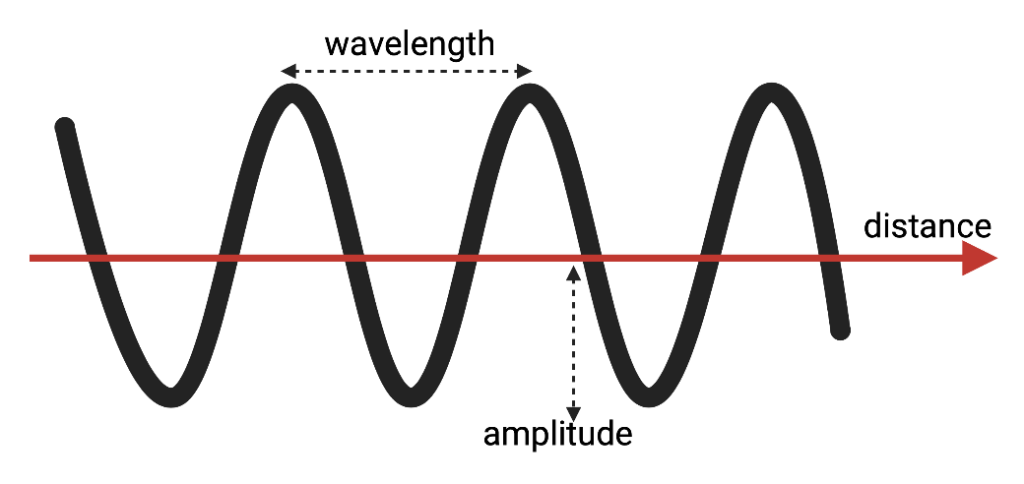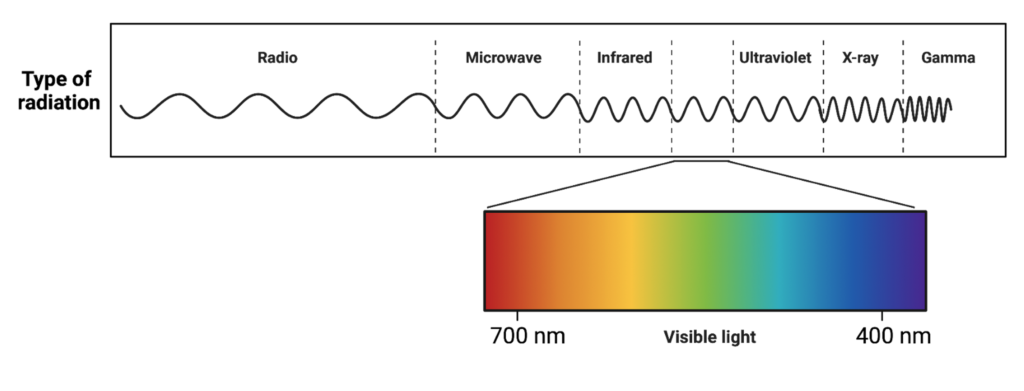(noun. /WAYV-length/)
by Amy Aponte
What does it mean?
Waves transmit energy from one point to another in the form of oscillations, and a wavelength is the distance between peaks or bases of successive waves. Sound and electromagnetic radiation (light) are examples of different waves. The different wavelengths of sound and light waves determine the properties of the wave and how it interacts with matter. Visible light, for example, has wavelengths between 400- 700 nanometers* and is the only part of the electromagnetic spectrum that can be seen by the naked human eye.
*nanometer = 1 billionth of a meter, or 10-9 meters
How do I use it in a sentence?
“Based on the electromagnetic spectrum, ultraviolet light has shorter wavelengths than infrared light.”


Fields of study in which this word is commonly used
Physics
Chemistry
Astronomy
